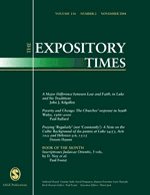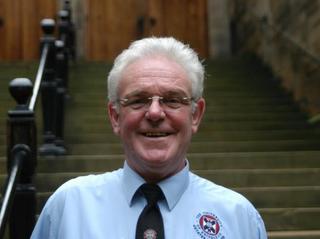The Magdalene Sisters (directed and written by Peter Mullan, UK & Ireland, 2002)
[watched on More4, 28 October 2005]
I have heard of this stunning film and the true story behind for a few years but never had the chance to watch it until now. I was so desperate this time that when I learnt of its airtime on TV, I set a reminder alarm for myself.
Is it a great film? Perhaps, and perhaps not. Is it enjoyable? Not the least. It is the kind of story that you don’t want it to continue but at the same time draws you deeply into the narrative. It is simple and direct from the very beginning, and makes you truly uncomfortable all the way through. Yet, you would keep on watching, because you are already caught up in the development and destiny of the characters once you start encountering them in their first appearances.

Dublin, 1964.
Three young girls were sent into the Magdalene Asylum for the rectification of their ‘sinful lives’. Margaret was raped by her cousin in the evening of a relative’s wedding. Bernadette who lived in an orphanage was flirt by too many boys from the neighbourhood. Rose had just given birth to a baby, unwed. We never heard a single word from those who sent them away. All three of the beginning scenes of abandonment are striking. They all begin with supposedly happy moments (festive mood in wedding ceremony, young people playing and flirting across the fence, new mother holding her newborn). Yet, all end up in sudden forced separations. And each of these scenes is shorter than the previous. The filmmaker simply does not need to go into the details anymore after the first instance. These betrayal experiences, which are to end up in brutality, are reminiscent of Phyllis Trible’s Texts of Terror.
What is horrible is then not only that which happens in the Magdalene. The horror is pervasive in the community. The sinful structure, so to speak, is not confined to the evildoings and hypocritical gestures in the convent, but permeates the whole culture of this supposedly pious Catholic society. The young girls are sent into the Magdalene only because their parents or guardians choose to hide what they regard as scandalous. As the Chinese saying goes, whatever you eyes cannot see is clean. This is simply a textbook case of structural evil.
Life in the convent is apparently orderly but the order is maintained in an authoritarian and sadistic fashion. Sleep, eat, work, walk according to a predetermined set of rules executed by the nuns. No talking during any of these times. Violators are beaten brutally. The orientation to the three newcomers by the sister-in-charge is most intriguing: Mary of Magdalene, the guardian angel of the convent, was a great sinner, and she had to deny herself of any worldly pleasure in order to cleanse her soul and gain her place in heaven; thus the girls in Magdalene would have to follow her example in order to secure their salvation; what is washed in the laundry is not just clothes but their sins and worldly desires. Therefore the girls are to work for long hours in the laundry everyday, for the sake of their own souls. This is truly the classical form of perverted view of redemption – to gain your salvation by being exploited.
Bernadette is so desperate to get out of the convent that she tries to seduce a young customer of their laundry and offers to marry him. She rips herself of dignity only to beg him to help her escape. The young man chickens out in the last minute, leaving Bernadette to face the brutal punishment of cutting her hair by force. Bernadette is a professionally trained hairdresser; to have her own hair cut to the extent of bleeding is probably the worst imaginable humiliation.
The depiction of abuse in the convent escalates as the narrative develops. Whipping, beating, and cutting the hair are taken for granted as forms of punishment. The most stunning scene is however the ‘game’ scene of the nuns comparing the naked bodies of the girls – who has the biggest / smallest breast, who has most pubic hair, etc. While the girls are either blank or weeping, the nun laughs and cheers and stresses repeatedly that it is just a game. A game!
With a simple trick by Margaret, it eventually comes to pass that the priest is openly exposed of taking sexual advantage of another girl, Crispina. This remarkable scene of exposing his shame is set in a special religious ceremony outdoor. When the priest is running away from the scene, Crispina is shouting ‘you are not a man of God!’ All the men on the spot just try to look away, showing embarrassment but apparently not wanting to face the matter. In the next scene, we see Crispina being transferred to a mental hospital to be locked up. The victim is regarded as the shame, and it is only by hiding the victim-shame away that the sinful institution can carry on with its business as usual.
When the three protagonists had the chance to leave the convent, both Margaret and Bernadette take revenge on the nuns in their own ways. Margaret is fetched by her younger brother who is grown up enough to come to find his sister. When she comes across the nuns in the corridor on her way out, she assertively demands them to step aside to give way to her. The sister-in-charge, of course, refuses out of her arrogance of the powerful. In the confrontation, Margaret kneels down and starts reciting the Lord’s Prayer. It is finally the visiting bishop and the nuns who start giving in. At this brief moment, we see Christian non-violent resistance at work.
In contrast, Bernadette is more violent during her escape with Rose, which is consistent with her character. She snatches the main key from the sister’s hand by force, calling her ‘you bloody twisting bitch’, and beats the nuns who try to stop her in the corridor. Even in the final shot of the film, in which she comes across the nuns in the street some years later after her escape, she is shown to be staring at them with bitterness and rage.
The audience is of course happy to see them being able to leave the Magdalene. Yet it is far from a happy ending. The convent, with its institutionalised oppression, is still there. Only our three protagonists have managed to get away. And probably, they are merely getting away from one microcosmic oppressive structure to a more gigantic oppressive structure – the whole society which is abusive and repressive, which uses the divine as the pretext to take advantage of the powerless. Hence, the visual tone of the final sequences after they escape has not changed – the gloom, the grey, the hard pressed feeling persist. Nonetheless, we as the audience do take a fresh breathe, as we see that at least three people have changed their destinies.

The Magdalene Sisters is on the whole a depressing film. It is depressing to see the pervasiveness of structural evil. It is even more depressing to see the abuse of power done in the name of faith and the divine. Such abuses end up pushing people toward the evil rather than delivering them from it. Yet the film is also an affirmative piece of work. It is affirmative to see that human destinies can break away from oppressive structures. It is even more affirmative to see that there are different possibilities to achieve this independence, and that the long term outcome of this disentanglement can take various forms (as seen in the ending captions).
It takes enormous courage to leave the institution, to take the risks of having nowhere to go and having no one to turn to. But it is also to responsibly exercise the most precious divine gift of human free will. Such, I think, is the film's ultimate celebration of humanity and, indirectly, of divinity.
Is the film anti church or anti Catholic or anti religion, then? Not according to my interpretation. It has not been excessively critical or sarcastic of the Catholic Church or of religious faith in any sense. It is, however, deeply critical of the perversion of faith for the advantage of ungodly desires. In my limited understanding of the Christian faith, this critical stance is totally faithful to the Biblical tradition which is itself radically against hypocritical perversion of faith in God. Yet when it comes to its view of redemption, the film is anti institutional -- the church (or religious institutions) is no longer considered a mediator of salvation. In this sense, the film is against [the classical teaching of] the Catholic Church.

































